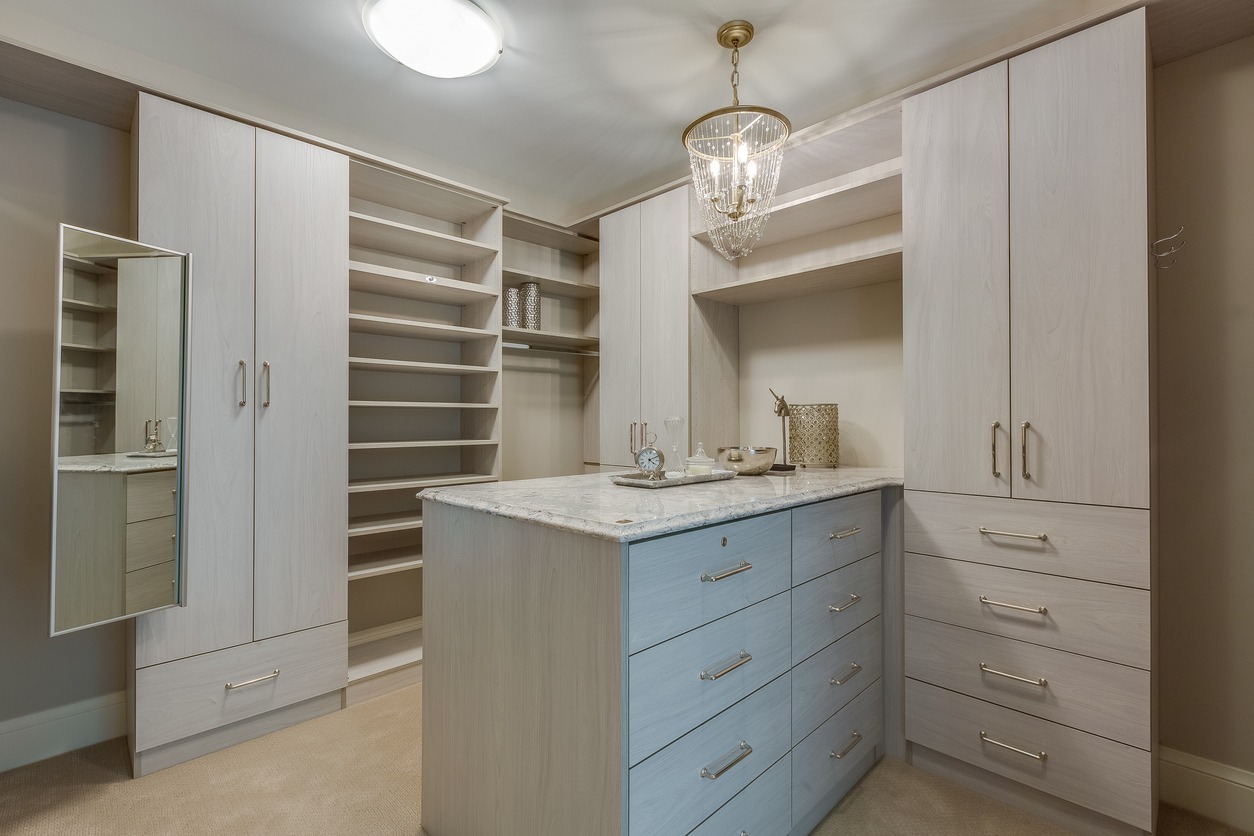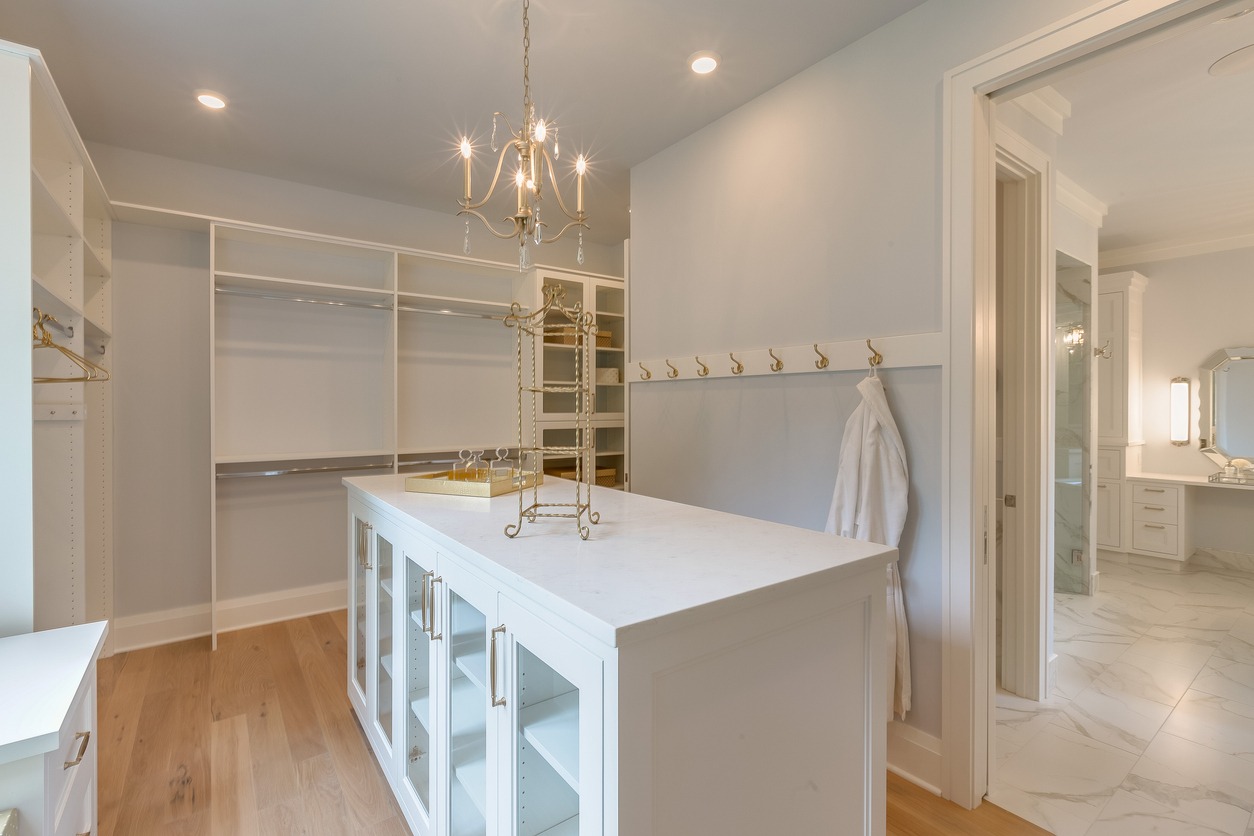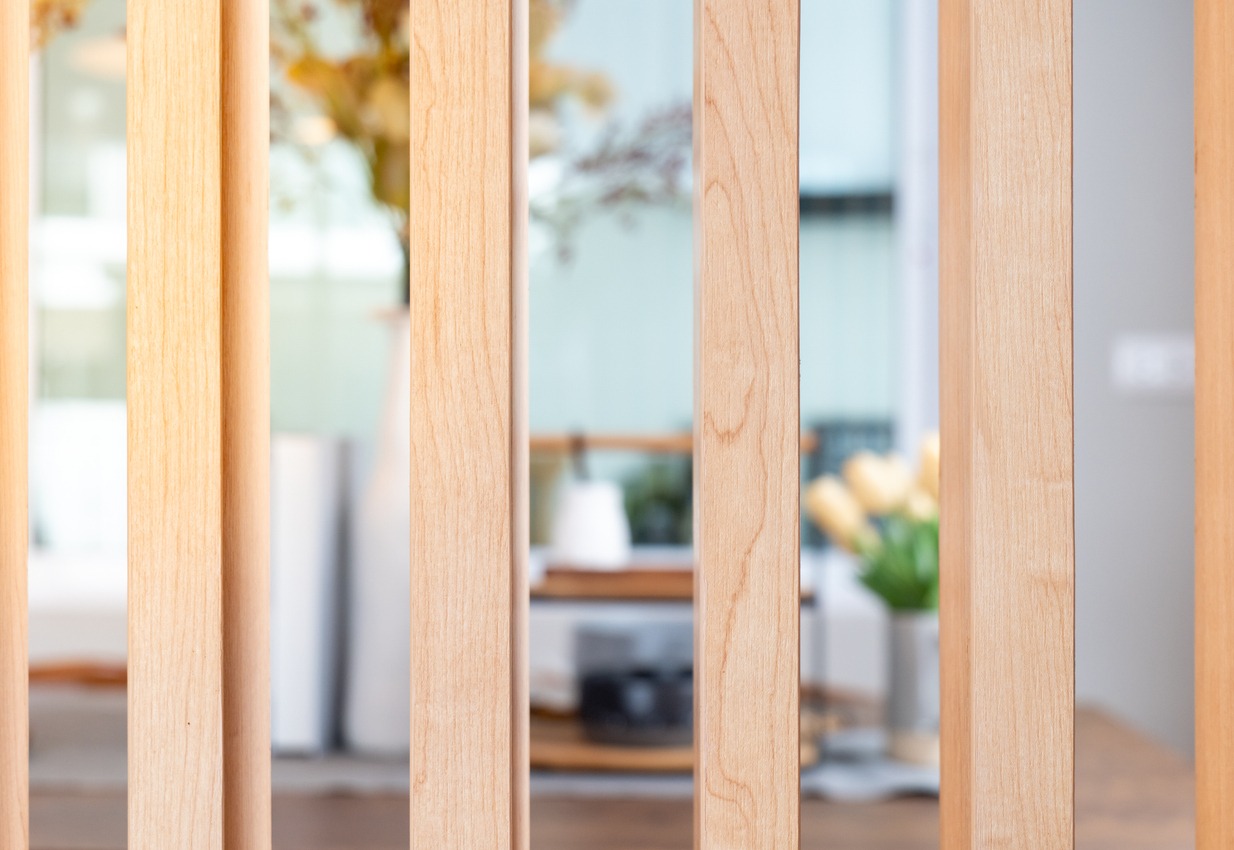Simple transformations like light carpentry and painting can help enhance a living space. Light carpentry involves smaller-scale woodworking projects that don’t need heavy machinery or extensive construction. This may include building customized shelves, framing new walls or spaces, or updating cabinets and moldings. These simple enhancements can add character to your home and improve its organization and efficiency.
When you pair light carpentry with strategic painting, your space can truly be refreshed. Let us explore how light carpentry and painting can enhance your space, increase your property’s value, and personalize your living areas.
Understanding Light Carpentry
Light carpentry involves smaller and less invasive woodworking tasks. But these can impact the aesthetic and functional aspects of your home’s interior significantly without the need of heavy equipment.
It typically includes activities such as installing trim work, such as baseboards, door casings, and crown moldings. It also involves constructing custom shelving, performing minor repairs, and updating existing wood features. These tasks are often achievable with basic carpentry skills and tools. They are ideally suited for personalizing and enhancing living spaces efficiently.
Benefits of Light Carpentry
Light carpentry for home improvement projects offers numerous benefits that can enhance both the usability and appearance of a home:
- Functional Enhancements: Light carpentry can help customize living spaces to meet specific needs. For instance, custom shelving and built-in furniture can be designed to fit exact dimensions, maximizing space without compromising the room’s aesthetic. Light repairs and updates can also revitalize older fixtures and features and extend their lifespan while maintaining functionality.
- Aesthetic Value: Light carpentry can transform a room aesthetically. Detailed trim work and moldings add depth and character to walls and ceilings, framing spaces with elegance and highlighting the architectural style of a home. Such enhancements contribute to a more finished and cohesive look and elevate the overall decor. They make spaces more inviting and stylistically distinct.
Light carpentry offers a practical route to customize and improve a home. Focusing on functionality and aesthetics provides an effective means to refresh and personalize living environments and add value and enjoyment to your home.
The Basics of Home Painting
Home painting is an important part of home improvement that can change the appearance and ambiance of a space. It is important to understand the types of paint available and how to pick the right colors to achieve your desired ambiance.
Types of Paint
There are several types of paint to consider when planning a home painting project, each with its own characteristics and best use cases:
- Oil-Based Paint: Known for its durability and smooth finish, oil-based paint is excellent for trim work, doors, and areas that endure a lot of handling or cleaning. However, it takes longer to dry and has a stronger odor compared to other types. It also requires solvents like turpentine for cleanup.
- Latex Paint (Water-Based): Latex paint is best for walls and ceilings due to its ease of use and quick drying time. It’s less odorous than oil-based paint and can be cleaned up with soap and water. This makes it more environmentally friendly. Latex paint is flexible and resistant to fading, which is ideal for both interior and exterior surfaces.
- Other Finishes: There are various finishes to consider aside from latex and oil-based paint. These include enamel, which provides a hard, durable finish ideal for cabinets and furniture. Specialty paints may also include chalk paint (great for creating a distressed look), milk paint (perfect for a vintage feel), and others designed for specific effects or surfaces.
Choosing the Right Colors
Selecting the right colors for your home can enhance the space’s aesthetic and influence its perceived size and temperature. Here are some tips for choosing colors that can transform your home effectively:
- Consider the Mood: Different colors can induce different moods. For instance, blues and greens are calming and excellent choices for bedrooms and bathrooms. Vibrant colors like red or yellow can energize a space, making them good options for kitchens or dining areas.
- Test Samples: Buy sample sizes to paint small sections of your walls before committing to a color. Observe how the color looks under different lighting conditions throughout the day, as this can significantly affect the appearance.
- Complement Your Furniture and Decor: Choose paint colors that complement your existing furniture and decor. Neutral colors offer flexibility and longevity, while bold colors can be a backdrop for highlighting art or statement pieces.
- Think About Lighting: Natural and artificial lighting will impact how paint colors appear in your home. Light colors can help make a small room feel larger and brighter, while dark colors can add depth and warmth to a larger space.
Choosing the right type of paint and color can transform your home’s environment and enhance both its function and style. Understanding these basics will help you make informed decisions that result in a beautiful and lasting finish.
Combining Light Carpentry and Painting for Home Enhancement
Combining light carpentry with strategic painting is a powerful approach to enhance your home. These two elements can help you create custom features that add beauty and improve your spaces’ livability. Here are some project ideas and their benefits:
Project Ideas
- Custom Shelving Units Painted to Match Room Décor: Custom shelving is a practical light carpentry project that provides tailored storage solutions for any room. Painting these shelves to match or contrast with the wall colors can integrate them seamlessly into your existing décor or turn them into a standout feature.
- Upgraded Trim and Molding with Complementary Paint Colors: Refreshing the trim, baseboards, and molding in your home can breathe new life into your spaces. Selecting complementary paint colors that highlight these carpentry enhancements can accentuate architectural details and bring a refined look to the overall room design.
- Refurbished Cabinets with New Hardware and Fresh Paint: Updating kitchen or bathroom cabinets with light carpentry adjustments and new paint can transform the heart of your home. This project can range from simple repainting to replacing doors and adding modern hardware, significantly affecting the ambiance and style of the room.
Visual and Functional Benefits
These carpentry and painting projects contribute both visually and functionally to your home:
- Enhanced Aesthetics: Light carpentry projects like shelving, trim, and cabinet refurbishment add bespoke architectural elements to your home that standard solutions cannot match. When combined with thoughtful paint selections, these modifications contribute to a cohesive and polished interior design. Custom elements can also highlight personal style preferences, making standard rooms uniquely yours.
- Increased Usability and Organization: Beyond aesthetics, these projects significantly enhance the functionality of a space. Custom shelving can provide organized storage options that keep clutter at bay. Upgraded cabinets and trim can improve the usability of spaces, making them more comfortable and efficient for daily activities.
- Added Home Value: Aesthetically pleasing and functional upgrades like these are enjoyable to live with and also add value to your home. Potential buyers often appreciate the practical benefits of custom carpentry and the fresh appearance of professional painting. These make your property more appealing in the competitive real estate market.
You can achieve a significant transformation in your home by carefully planning and executing light carpentry and painting projects. This enhances the beauty and practicality of your spaces.
Planning Your Project
Here are essential considerations when planning for the project to help you execute it smoothly.
Design Considerations
- Aligning with Home’s Overall Style: It’s important to consider your home’s existing architectural style and decor. This ensures that any enhancements complement the overall aesthetic. For instance, choosing trim or shelving styles that reflect the home’s era can maintain a coherent look. Similarly, selecting paint colors should match existing color schemes and furnishings. Consider consulting design magazines, online resources, or professionals to gather ideas that mesh well with your home’s character.
- Visual Cohesion: Make sure that new projects do not clash with current elements. For carpentry, use materials and finishes that match or enhance existing woodwork. For painting, choose colors that either create a gentle flow or purposeful contrast within your space, depending on the desired effect.
Budgeting Tips
- Material Costs: Begin by researching the costs of materials. Whether it’s wood for shelving or paint, prices can vary widely based on quality and type. Opt for the best materials within your budget. Higher quality often means better durability and appearance.
- Labor Costs: If you plan to hire professionals, get multiple quotes to compare rates and check references. If you’re doing it yourself, consider the cost of tools you might need to buy or rent.
- Contingency Fund: It’s wise to allocate 10-20% of your budget for unexpected expenses. Unexpected issues like discovering damage or needing extra materials often arise during home improvement projects.
- Cost-Saving Strategies: You can save money by doing some of the prep work yourself, such as removing old hardware or sanding surfaces before painting. Look for sales or bulk deals on materials, and consider refurbishing or repainting existing items rather than replacing them entirely.
Timeline Management
- Estimating Project Duration: Research how long similar projects typically take and be realistic about timelines. For example, painting a room might take a weekend, whereas building and installing custom shelving could take several weeks, depending on complexity.
- Planning for Disruption: Schedule projects for times when they will least disrupt your household. For extensive projects, consider whether you need to set up temporary alternatives, such as a temporary kitchen setup, if you’re remodeling your main one.
- Staying Flexible: While it’s important to set a timeline, be prepared for adjustments. Delays can occur due to weather, supply issues, or other unforeseen factors. Keep a flexible schedule and communicate regularly with hired professionals to stay updated on progress and potential delays.
Careful planning around design, budget, and timeline can significantly enhance your home’s functionality and aesthetic appeal while keeping stress and disruption to a minimum.
DIY vs. Professional Approach
When it comes to home improvement projects, homeowners have the option of choosing between DIY and professional approaches. Each has its advantages and considerations. The best choice depends on several factors, including skill level, budget, and the project’s complexity.
DIY Approach
Advantages:
- Cost Savings: By handling the labor yourself, you save on the expense of hiring professionals. This can be particularly advantageous for those on a tight budget or looking to invest more in higher-quality materials.
- Flexibility: Working on your own timeline can be less stressful. You can work at your own pace and on your schedule, which is ideal for those with fluctuating availability.
- Personal Satisfaction: Completing a home improvement project on your own can provide a significant sense of accomplishment. There’s a pride in seeing your handiwork daily that you just don’t get from hiring out.
Considerations:
- Skill Level: Some tasks might require skills beyond the average DIYer’s scope. Thismay lead to potential mistakes or rework. Evaluate your abilities honestly before starting a project.
- Time Investment: DIY projects often take longer than expected, especially if you are learning as you go. This can be frustrating if you’re trying to complete a project on a tight timeline.
- Tools and Equipment: Some projects might require specialized tools that can be expensive to buy or rent, potentially offsetting the savings on labor.
Professional Approach
Advantages:
- Expertise and Quality: Professionals adhere to current codes and standards. They bring expertise that ensures the project is done correctly the first time. The quality of work is often higher, which can be particularly important in complex projects or those that require a polished finish.
- Speed: A professional team can complete work much faster than an individual amateur. This is crucial if the project needs to be completed quickly or before a significant event.
- Warranty and Liability: Many professionals offer warranties on their work. This provides peace of mind that any issues will be addressed without additional costs. They also carry insurance that protects against damage or accidents.
Considerations:
- Cost: Hiring professionals is generally more expensive than doing the work yourself. It’s important to get multiple quotes and check references to ensure you are getting good value.
- Scheduling: You may need to work around the professional’s schedule, which can lead to delays or inconvenience.
- Control: Some homeowners find that hiring out can lead to a loss of control over the project’s execution and final appearance.
Making the Decision
Consider the scale and complexity of the project, your skill level, the tools required, and your budget when deciding. For simple tasks like painting a bedroom, DIY might be a feasible and rewarding option. However, for more complex installations or renovations that require skilled craftsmanship, professional services might not only be more efficient. Still, they could also result in a higher quality finish and better durability of the work completed.
Preparation and Execution
Below is a guide that outlines the essential preparatory work and offers a step-by-step approach to tackling common tasks within these domains.
Preparatory Work
Before diving into any project, thorough preparation is key to ensure a smooth process and successful outcome.
- Material Selection: Choose the right materials for the job. For carpentry, this might involve selecting the appropriate type of wood based on durability, aesthetics, and cost. For painting, it involves choosing the right type of paint and finish, considering factors like the room’s function, lighting, and moisture exposure.
- Tool Preparation: Gather all necessary tools before beginning. For carpentry, common tools include saws, hammers, drills, and measuring tapes. You’ll need brushes, rollers, paint trays, and drop cloths for painting. Ensure all tools are clean and in good working order.
- Area Setup: Prepare the work area to prevent damage and make the job easier. For painting, this means using drop cloths to protect floors, taping edges for clean lines, and ensuring good ventilation. For carpentry, it involves clearing sufficient workspace and securing materials for cutting or assembly.
Step-by-Step Guide
Here are basic instructions for typical tasks in light carpentry and painting:
Light Carpentry: Installing Shelving
- Measure and Plan: Measure the space where the shelving will go. Sketch your design, noting the dimensions and the location of supports or studs.
- Cut Materials: Cut your wood according to the measurements. Ensure each piece is cut straight and to the exact length required.
- Assemble: Lay out the pieces as they will appear when installed. Pre-drill any holes to make assembly easier and prevent splitting. Use screws or nails to assemble the basic frame or shelving unit.
- Install: Secure the shelving to the wall, ensuring it’s anchored into studs for stability. Use a level to ensure shelves are straight.
- Finish: Apply final touches, such as sanding rough edges, painting, or staining, to protect the wood and enhance its appearance.
Painting: Painting a Room
- Prep the Room: Remove furniture or cover it with drop cloths. Use painter’s tape to mask areas you don’t want painted, such as window frames and baseboards.
- Prime the Walls: If necessary, apply a coat of primer to help the paint adhere better and to achieve a more uniform finish. This is especially important if you’re making a dramatic color change or painting over a darker color.
- Paint: Begin by cutting in around the edges of the room with a brush. Then, use a roller to fill in the larger areas. Start from the top (the ceiling, if that’s part of your project), and work your way down.
- Apply Second Coat: Depending on the color and type of paint, a second coat may be necessary for even coverage and vibrant color.
- Cleanup: Remove all tape before the paint fully dries to avoid peeling. Clean your brushes and rollers with water for latex paint or a solvent for oil-based paint. Once the paint is dry, return the furniture to the room.
Following these steps for preparation and execution will help ensure that your light carpentry and painting projects are successful, enhancing your home’s functionality and aesthetics.
Conclusion
Home improvement projects like light carpentry and painting can significantly enhance your living space’s comfort, functionality, and aesthetic appeal. By carefully planning and executing these tasks, you can achieve professional-looking results that make your home more inviting and personalized. If you want expert advice or need professional help with your next project, don’t hesitate to contact Custom Painting, Inc. You can reach us by calling 925-294-8062 or by filling out our contact form on our website. Let us help you make your home improvement dreams a reality!




